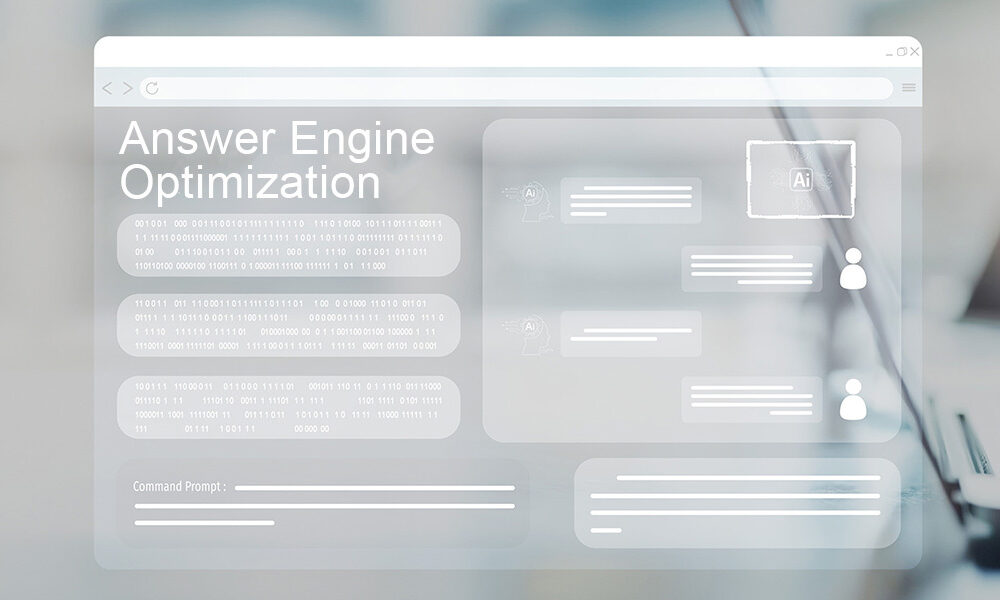Mastering Answer Engine Optimization with Expert Sage Zaree

In an era where AI-powered search is revolutionizing how users find information, Answer Engine Optimization (AEO) has emerged as the next frontier on the digital marketing front for businesses. I had a conversation with Sage Zaree, a marketing leader and expert in AEO strategies, to understand how businesses can adapt their content optimization approaches for AI generated responses.
How would you define Answer Engine Optimization for our technical audience?
Answer Engine Optimization is fundamentally different from traditional SEO. SEO focuses on ranking in search results to drive clicks, AEO is about structuring your content so that LLMs like ChatGPT, Google’s AI Overviews, Perplexity, and other answer engines can extract, understand, and cite your information directly in their responses. It is optimizing your content so that you get attribution for zero-click results. This can result in brand mentions, positive press, and hopefully traffic if a link attribution is permitted, like in AI Overviews for Google.
The main difference is that we’re now optimizing for machine comprehension rather than just human readability and search engine crawling. This requires a deeper understanding of how large language models process and synthesize information.
What are the core principles that drive effective AEO implementation?
3 foundational principles are important. First, it is semantic, so you need to clarify your content because it must be structured in a way that clearly answers specific questions. This means using precise, declarative statements rather than vague, explanatory language.
Second, your content has to be “citation worthy”. AI engines favor content that appears authoritative and is referenced by multiple credible sources. So citations are very important, both in quantity and quality and being mentioned alongside other authoritative sources increases your likelihood of being included in AI responses.
Third is entity optimization. You need to establish clear entity relationships within your content. In other words, properly define who you are, what you do and how you relate to other entities in your space using structured data and consistent naming conventions. Again, an entity can be anything: a person, a place, or an event, but keeping these naming conventions consistent will go a long way in your AEO content efforts.
Can you walk us through the architecture needed for AEO success?
I would recommend starting with content structure. Implement schema markup extensively; this is probably the most direct way to feed answer engines the exact answer users are looking for. So getting good at JSON-LD structured data to define your organization, services and expertise is really important.
For content architecture, adopt a clear hierarchy with content structure and informational architecture. Lead with the direct answer in the first sentence, follow with supporting context, then provide detailed explanations for all of your answers. This mirrors how AI systems prefer to consume information; they tend to extract the core answer immediately while having access to supporting details for additional context.
Another pro implementation requires robust internal linking with descriptive anchor text that establishes topical authority. So creating content clusters around your core expertise areas, with pillar pages that comprehensively cover topics and supporting pages that dive into specific subtopics.
How do you identify and optimize for the right queries in an AEO strategy?
Query identification for AEO requires a different approach than traditional keyword research. You need to focus on conversational and longer-form question queries that users are likely to ask AI assistants. There are several tools, such as AnswerThePublic and AlsoAsked, that are valuable for getting great insights. However, if you have the time, I would recommend analyzing the types of questions your target audience asks on platforms like Reddit, Quora, and industry-specific forums.
Once you have your questions, next try to standardize them by creating a question taxonomy that covers different query intents, for example: definitional questions like “What is”, procedural questions such as “How to”, comparative questions “X vs Y” and even situational questions like “When should I”. Each category should have content developed that provides authoritative and comprehensive answers.
The optimization involves creating dedicated pages for high-value questions, optimizing existing content with clear question-answer sections, and ensuring your answers are comprehensive enough to stand alone while being concise enough to be quotable.
What role does content formatting play in AEO success?
Content formatting is crucial because AI systems need to parse and understand your information hierarchy quickly. So just like with on-page SEO, use clear heading structures (H1, H2, H3) that follow a logical question-to-answer ratio.
Also implement authority signals, things like numbered lists for a step-by-step process, bullet points for feature lists, and definition lists for glossaries. These formatting elements help LLMs understand the structure of your content and make it easier for them to clarify its purpose.
Tables are mighty for comparative information. If you’re explaining different solutions or comparing features, structured tables make it easy for AI systems to extract and present comparative data accurately.
How can businesses measure and track their AEO performance effectively?
AEO measurement requires new metrics beyond traditional SEO KPIs. First, implement brand mention tracking across AI platforms. My favorite is Brand24 but Google Alerts is free. Either way these can help you monitor when your brand or content is cited in AI responses, but a huge step is to manually query AI systems with relevant questions to see when you appear.
Citation analysis is also critical to track not just whether you’re mentioned, but in what context and alongside which other sources. Being cited with authoritative sources in your field is more valuable than standalone mentions.
For tracking, monitor your schema markup implementation using Google’s Rich Results Test and ensure your structured data is being properly interpreted. Again, clicks are still the gold standard, so track your pages through traditional marketing analytics, but also monitor for increased direct traffic and brand searches, which often indicate successful AEO implementation.
Set up Google Search Console to track which queries are driving impressions for your content, particularly long tail queries that indicate AI-driven search behavior.
What are the most common technical mistakes you see in AEO implementations?
The biggest mistake is treating AEO like traditional SEO. Many businesses try to stuff keywords as a way to improve AI visibility, but AI systems are much more sophisticated at detecting and penalizing lower-quality content.
Another standard error is an incomplete entity definition. If your content doesn’t establish who you are and what makes you authoritative on a topic, AI systems will overlook you in favor of more clearly defined sources.
Technical implementation errors include improper schema markup, such as using the wrong schema types or just implementing them incorrectly and not maintaining consistency across all the different digital templates. Your entity information needs to be consistent across your website, social profiles, directory listings and any other digital presence.
Finally, many businesses create AEO content in isolation without considering the broader content ecosystem. AI systems favor sources that demonstrate comprehensive expertise across related topics, not just individual pieces of optimized content.
Looking ahead, how do you see AEO evolving as AI technology advances?
We’re moving toward more sophisticated AI systems that can understand context, intent and nuance at deeper levels. This means AEO strategies will need to focus increasingly on demonstrating genuine expertise and authority rather than just technical optimization.
I expect we’ll see the rise of multimodal AEO, so you would have to optimize for images, videos and audio content not just text for AI consumption. We’re already seeing AI systems that can analyze and cite visual content, so businesses need to start thinking about how to make their multimedia content “AI readable”.
As this progresses, citations will also become more sophisticated. AI tools will likely develop more nuanced ways of evaluating source credibility, potentially incorporating real-time reputation metrics and cross-referencing multiple data points to determine a brand’s authority.
The businesses that succeed in AEO will be those that focus on creating genuinely valuable, authoritative content while implementing the infrastructure needed to make that content accessible to AI systems. In later years just like with SEO, it will be less about gaming an algorithm and more about becoming the definitive source in your field.
Any final recommendations for businesses just starting with AEO?
Start with an AEO audit of your existing content. Identify your most authoritative pieces and optimize them first with proper schema markup, clearly formatted content structures, and easy-to-understand entity definitions.
Then you can scale by building a systematic approach to content creation that prioritizes answering specific user questions thoroughly and authoritatively. Every piece of content should be able to stand alone as a complete answer to a user’s query, but should also complement each other, so they should be topically relevant.
Finally, remember that AEO is a long-term strategy. Just like with traditional SEO, establishing authority with AI systems takes time and consistent effort. Focus on building genuine expertise and technical excellence, and the visibility will eventually follow.

Source: Mastering Answer Engine Optimization with Expert Sage Zaree


